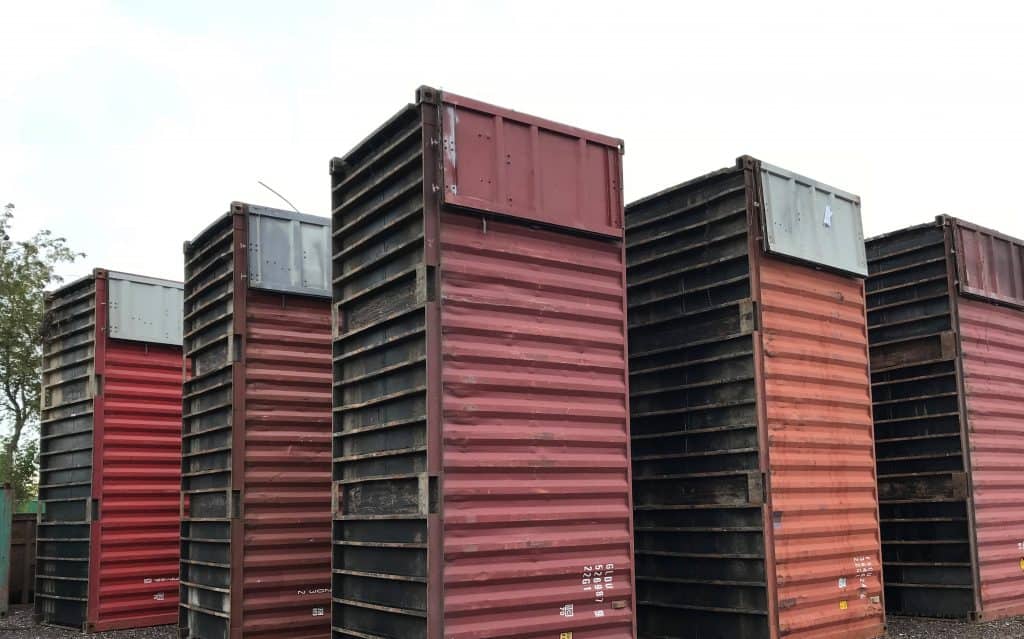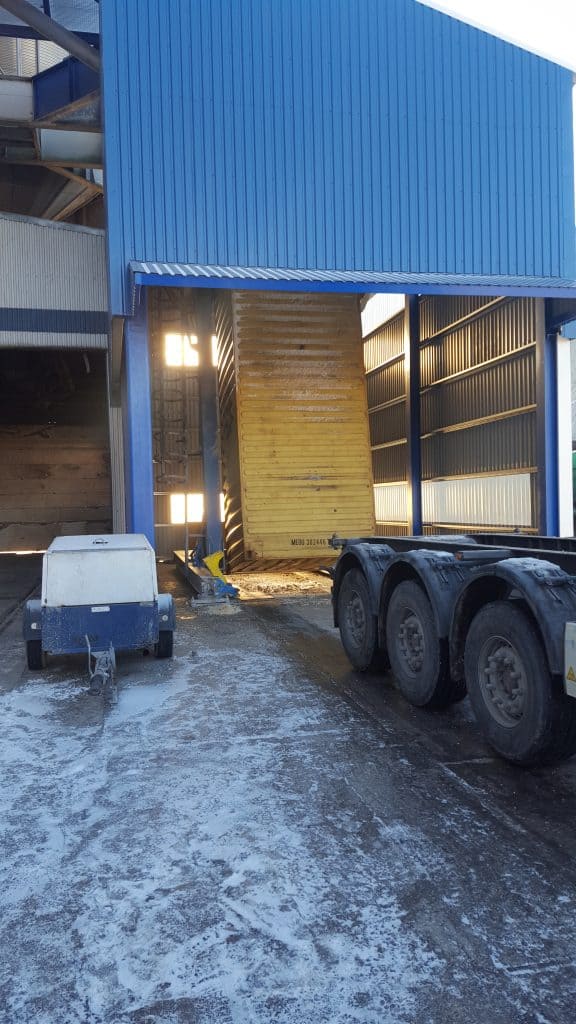Grain loading
Stuffing and shipments of grain in 20-foot containers is becoming increasingly popular cause arranging logistics of grains in such intelligent manner is getting more easer. There is no need to store large quantities of cargo in warehouses and shipments could be shipped on weekly basis. We usually load 24-27 tons of cargo into containers, and max payload of the container depends on cargo stowage factor. In general the volume of the 20-foot standard container is 33 cubic meters, but all 33 cubic meters will not be loaded – a bulkhead or liner with metal bars are placed in front of the container door. We are able to load 30-32 cubic meters of cargo info 20 foot container.
First of all, it is necessary to prepare the load that is to be unloaded from wagons or dump trucks and placed in warehouses. It is also a rather simple process , despite the fact that every load needs to be checked and sampled. For this procedure we use rakorafs.

Cargo inspection required
The cargo inspection shall be carried out before the cargo is unloaded into storage, as it is necessary to determine the quality of the load (proteins, moisture), to inspect and check are the grains free from pests or other impurities. This is a very important point in the process, because only to ensure quality will it be possible to fully execute the contract.
Landing of cereals
We organize the unloading of grain crops from railway or road transport to warehouses, reservation of warehouses, cargo volume monitoring, accreditation of wagons at “Klaipeda” and “Draugyste” stations, and the dispatch of empty wagons. We pay rail fares through the territory of Lithuania and organize cargo deliveries with dumpers.

Grain discharge from wagons 
Warehouse with wheat cargo
Methods of loading into containers
After all, there are several loading ways. One of them is to turn containers door up and pour grain with a bucket loader from above. In this way the volume of the container is used to the maximum, but it is one of the most dangerous loading squads, because the container is placed on the frame, tethering the door to the walls. When you load in this way, the load falls from a fairly high level. Sometimes the load into containers can be arrange by converting a 20-foot container at an angle of 45 degrees. The loading method in Klaipeda is practically no longer used because the process is long and time-intensive.

Turning the container before loading 
Container preparation – liner installation
Using special devices for converting the container, the translation of containers is carried out much faster. One of the conversion devices is shown below. It allows us to quickly and easily turn a container, but the cargo will still have to be poured from above with a bucket, tape or other type of loader. The weight shall be determined by weighing the load on the belt balances installed on the transport line.

The fastest and optimal method of loading is to use specialized devices. This allows not only to load loads quickly and safely, but also not to waste time transporting the container to the scales, as the device already has load scales installed. One such device is shown below.

Organisation of all processes in one hand
We organize all complete processes, cargo arrival by dumpers, quality and quantity determination ,selection and preparation of containers(liner or partition installation), loading organization, weight control, fumigation, sea freight and complete documentation. After all, sometimes small contracts for the sale of cereals are signed or washouts аrе processed and the shipping of cereals in huge shipping batches is not convenient and cost-effective.
Contact JSC Onze specialists today and get cargo transportation and loading offers. Loading grains and transporting 20-foot containers around the world is our everyday job.



